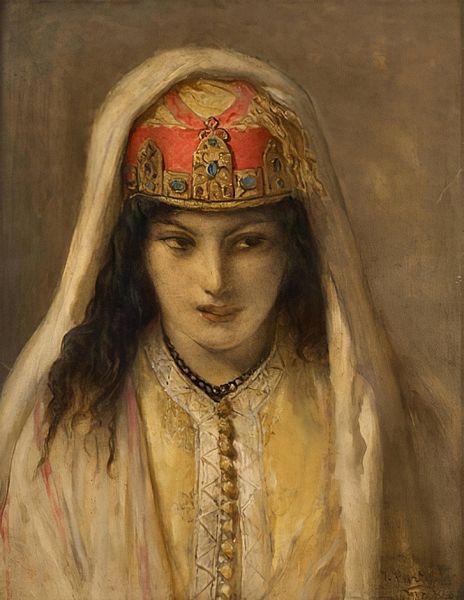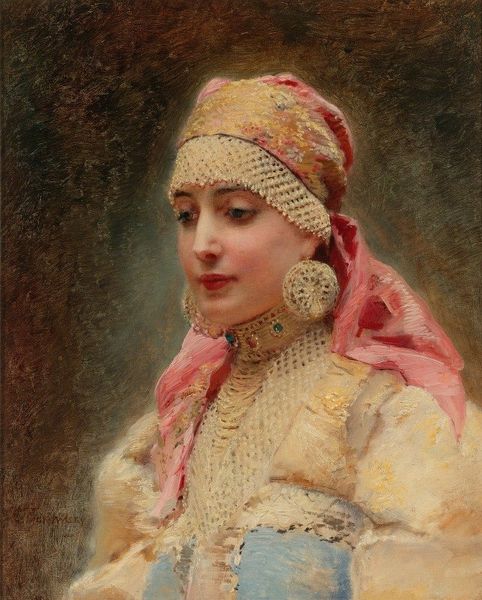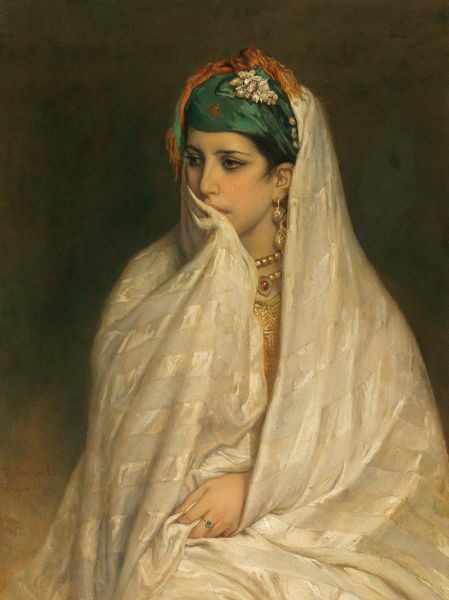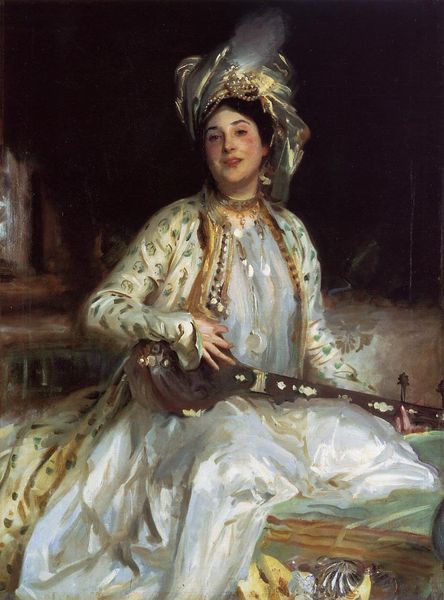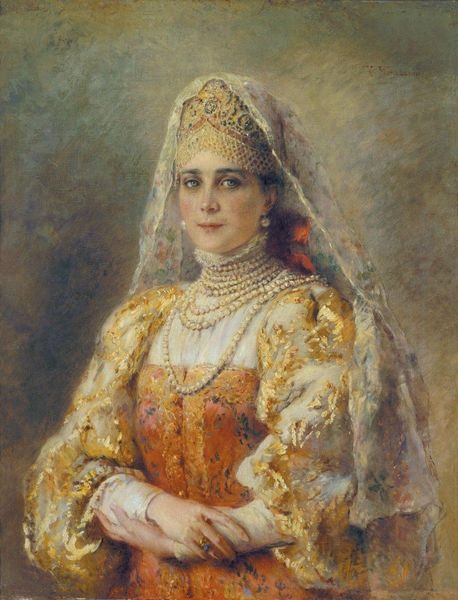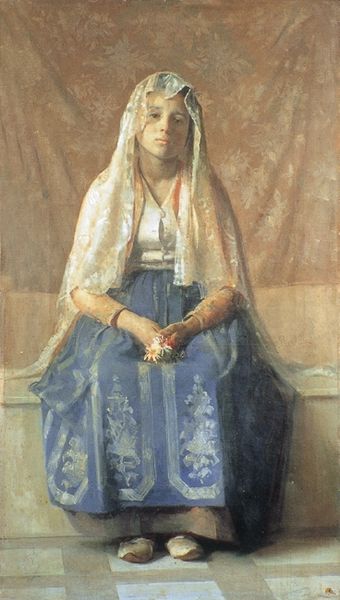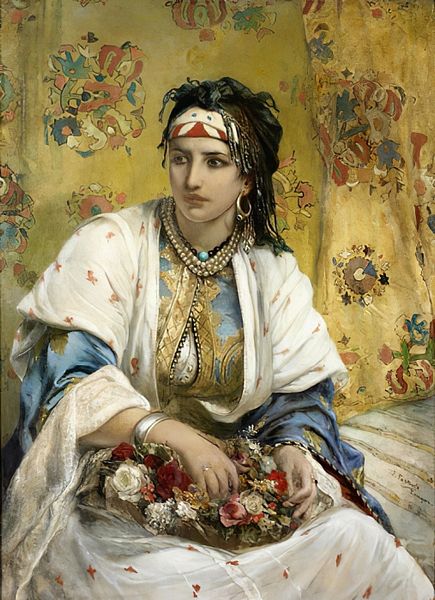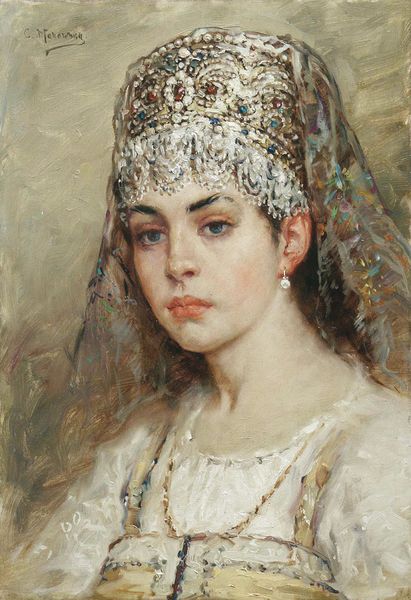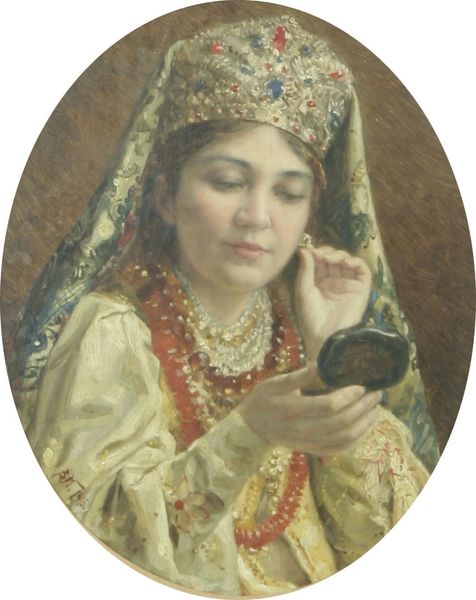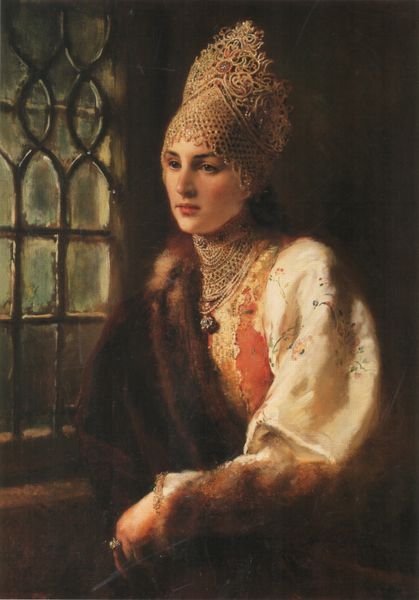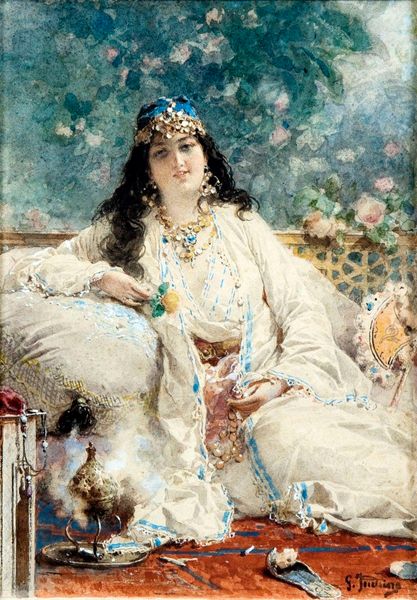
Copyright: Public domain
Editor: Here we have "Cup of Honey" painted in 1910 by Konstantin Egorovich Makovsky, using oil paint with impasto. It feels romantic, almost like a dream. All those delicate details and soft edges... What compositional elements stand out to you the most? Curator: Focusing purely on its formal aspects, observe how Makovsky orchestrates color temperature: the cooler tones of the figure are set against a predominantly warm background. It is an example of counterchange where warm advances, cool recedes. The layering technique builds up a tangible surface, allowing the play of light to define forms. Notice, also, how the veiled effect softens every edge, emphasizing the interplay between translucency and opacity. Is there anything specific about this tension that captures your attention? Editor: I see what you mean. It's like the blurriness almost makes it more realistic because our eyes don't actually see everything perfectly sharp. The texture of her dress – the impasto is so thick. Was Makovsky part of a particular school of thought about textures in artwork? Curator: To discuss schools might veer into sociohistorical domains; observe primarily that the visible brushstrokes are part of the overall aesthetic. The materiality asserts its own presence, complicating any facile reading of pure representation. Makovsky foregrounds his chosen medium rather than obscuring it, and this demands a focused consideration. What relationship is thus proposed between representation and abstraction? Editor: So, it's less about the woman as a person and more about how the paint itself creates her. That makes you think about what is real and what is artistic license, like a constructed image. I hadn’t really considered the importance of texture before and how the lack of detail gives depth, like our memories, too. Thank you! Curator: Indeed, considering the inherent qualities of form—surface, color, texture—refines one's perspective of what constitutes "reality" in representational art.
Comments
No comments
Be the first to comment and join the conversation on the ultimate creative platform.

